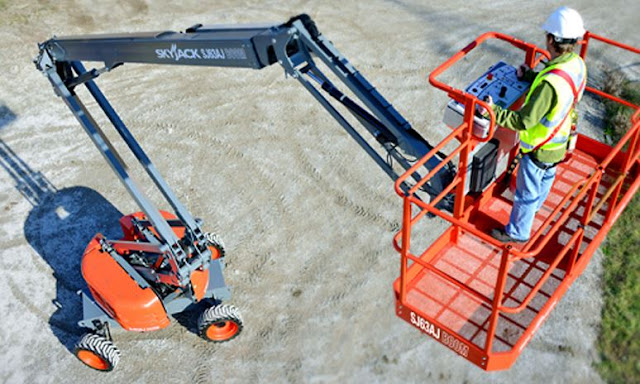
Have you reviewed OSHA wind restrictions while working on an aerial lift?
If not, working on lift in windy weather can pose dangerous, life-threatening conditions for construction workers. Adverse climate conditions unfavorably impact aerial work platform lifting practices.
Weather is one of the top priorities to consider during the arrangement, as well as the execution of an aerial lift. There are so many statistics of fatalities, injuries, and deaths caused by working in these windy conditions, and one of the main culprits of construction site accidents is the unpredictable event of flying dirt and debris during a high wind gust.
OSHA considers winds exceeding 48.3 km/hr or 64.4 km/hr if the work involves material handling that can meet this criterion unless you take precautions to protect yourselves from the hazardous effects of wind. When winds are dominant, it is advisable to postpone the non-emergency work as it can cause a worker to lose control of the machine, thus be struck by hasty wind or can blow a worker from an elevated location.
Here's A Case: Even if the workers are wearing fall protection harness, if they are not provided with the means to secure the anchorage point in windy situations- the result is devastating! So, to prevent unnecessary tragedies and injuries, it is crucial that workers measure their own safety, as well as their co-workers around them. Here's everything you need to know while working with aerial lifts in windy weather:
Do Not Operate The Lift Beyond The Aerial Lift Wind Restrictions
Falls are one of the prime causes of injuries and death in the construction industry and are often caused by adverse weather.
According to the Beaufort Scale of Wind Force, it is recommended not to use powered access platforms if the wind reaches a level 5 on the scale. Level 5 means fresh breeze, and between 18-24 miles per hour. At this level, small trees begin to sway, and wave crests start to form on water bodies.
Read The Lift's Horizontal And Vertical Reach Limits
Be sure to go through the manufacturer’s instructions for horizontal and vertical reach limits before you operate the lift. When the reach limit is exceeded, it can cause imbalance and instability to the machinery, especially in windy conditions.
As a general rule, the higher the lift is elevated, the more careful workers need to be. Also, take into account the weight of the workers and added weight of tools onboard while calculating the overall load weight. Use stabilizers and outriggers to help stabilize the lift.
Get Aerial Lift Training
According to OSHA, to address fall protection, aerial lift wind restrictions, and other safety issues – employers need to ensure that the workers have aerial lift certification that shows your employees the importance of workplace safety.
The operators will get training from the highly-trained aerial lift operators who know the ins and outs of what every employee needs to know. It covers all types of lifts, from telescopic boom lifts to cherry pickers to scissor lifts. You will learn how to perform machine inspections, also recognize and avoid accidents.
Use Fall Protection Equipment
Fall protection includes shock-absorbing lanyards and full-body harnesses. Fall protection systems are effective at protecting workers from falling to the ground.
However, even if the lift has a proper functioning guardrail system and workers are equipped with a full-body harness, OSHA wind restrictions forbid work during winds of speed 30 miles/hour.
In addition, ensuring the aerial lift is secure and stable is imperative, especially when there is a wind. The positioning includes the place where you position the lift, which involves overhead obstacles like structures, trees, and electrical lines.
Keep a check on wind conditions while working on aerial lifts. Aerial lift wind restrictions will help you avoid safety hazards and injuries on the job!
